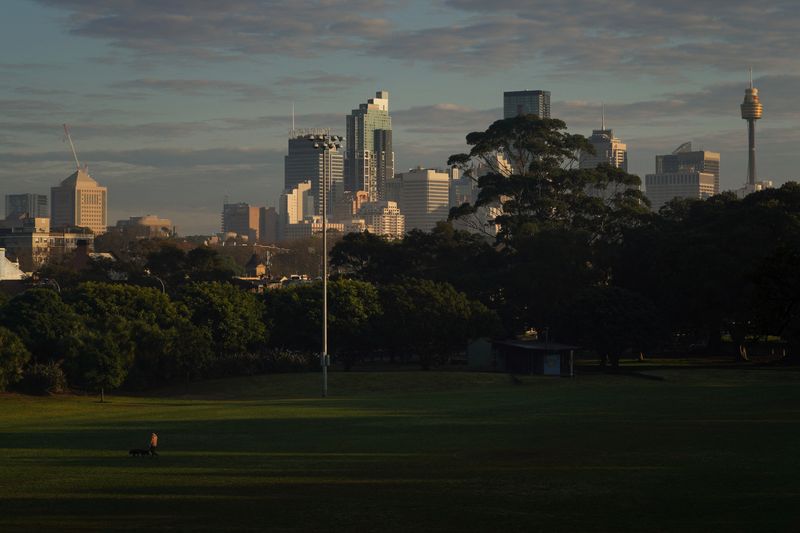SYDNEY (Reuters) -Australian consumer price inflation slowed more than expected to a two-year low in the fourth quarter, while a sharp deceleration in core inflation prompted markets to bring forward bets of rate cuts.
The price data would be a welcome relief for the Reserve Bank of Australia as it prepares to deliver its first policy decision of the year next Tuesday. Financial markets are certain the tightening cycle is over and that the next move would be down.
Futures rallied to imply around an even chance for the first rate cut in May, up from 30% before the data. A quarter-point cut was now more than fully priced for August and the total easing for 2024 moved to 52 basis points, from 42 basis points.
Data from the Australian Bureau of Statistics on Wednesday showed the consumer price index (CPI) rose 0.6% in the fourth quarter, under market forecasts for a 0.8% increase. The annual pace of CPI inflation slowed to 4.1%, was well below the peak of 7.8% in December 2022.
A closely watched measure of core inflation, the trimmed mean, rose 0.8% in the fourth quarter, under forecasts of a 0.9% increase. The annual pace slowed to 4.2%, from 5.2%.
The Australian dollar eased 0.4% to $0.6575 after the data, while three year bond futures extended earlier gains to 96.40, the highest level in two weeks.
Rob Carnell, head of research, Asia Pacific at ING, cautioned that the slowdown in the December quarter was driven by base effects and inflation could start to tick up in January and February.
"I think the markets got ahead of itself... I would say this is a time to take a contrarian view and that the inflation data over the next couple of months may well look considerably less helpful."
For December, the CPI rose 3.4% year-on-year, down sharply from 4.3% in November and down more than two percentage points in three months.
Barclays (LON:BARC) on Wednesday brought forward their expectations for the first rate cut from the RBA to the third quarter, from the previous forecast of Q4.
Treasurer Jim Chalmers on Wednesday welcomed the slowdown in inflation, but said this is "not mission accomplished".
The RBA has already raised interest rates by 425 basis points to a 12-year high of 4.35% since May 2022 to tame runaway prices. It also left the door open to further tightening if necessary to meet its annual inflation target of 2-3%.
The economy has evolved largely as the RBA had expected over the past two months, with the labour market loosening, consumer spending soft amid costs of living pressures and goods disinflation continuing.
However, the overseas landscape has changed drastically. With inflation abroad falling rapidly, markets are betting the Federal Reserve and European Central Bank would be soon cutting interest rates. They see the first rate cut from the Fed in May and first easing from the ECB in April.
The December quarter report showed progress on both goods and services disinflation. Services inflation, which policymakers had feared would be sticky, eased for the second straight quarter to 4.6%.
However, non-tradeable goods and services inflation, influenced mostly by domestic demand, remained high at 5.4%. Rent inflation eased a touch to a still elevated rate of 7.3% while insurance prices jumped 16.2%, registering the strongest annual rise since 2001.

"Inflation will keep falling, but the pace will slow," said Harry Murphy Cruise, an economist at Moody's Analytics.
"Making things more difficult, stage three tax cuts already in our baseline forecasts will hand back cash to households at the exact same time the RBA will be trying to take money out of the economy," he said, adding that it's one reason that Moody's only sees a cut from the RBA in September.